Surgical versus non-surgical interventions for treating patellar dislocation
- PMID: 36692346
- PMCID: PMC9872769
- DOI: 10.1002/14651858.CD008106.pub4
Surgical versus non-surgical interventions for treating patellar dislocation
Abstract
Background: Patellar (knee cap) dislocation occurs when the patella disengages completely from the trochlear (femoral) groove. It affects up to 42/100,000 people, and is most prevalent in those aged 20 to 30 years old. It is uncertain whether surgical or non-surgical treatment is the best approach. This is important as recurrent dislocation occurs in up to 40% of people who experience a first time (primary) dislocation. This can reduce quality of life and as a result people have to modify their lifestyle. This review is needed to determine whether surgical or non-surgical treatment should be offered to people after patellar dislocation.
Objectives: To assess the effects (benefits and harms) of surgical versus non-surgical interventions for treating people with primary or recurrent patellar dislocation.
Search methods: We searched the Cochrane Bone, Joint and Muscle Trauma Group's Specialised Register, the Cochrane Central Register of Controlled Trials (CENTRAL), MEDLINE, Embase, AMED, CINAHL, Physiotherapy Evidence Database and trial registries in December 2021. We contacted corresponding authors to identify additional studies.
Selection criteria: We included randomised and quasi-randomised controlled clinical trials evaluating surgical versus non-surgical interventions for treating primary or recurrent lateral patellar dislocation in adults or children.
Data collection and analysis: We used standard Cochrane methods. Our primary outcomes were recurrent patellar dislocation, and patient-rated knee and physical function scores. Our secondary outcomes were health-related quality of life, return to former activities, knee pain during activity or at rest, adverse events, patient-reported satisfaction, patient-reported knee instability symptoms and subsequent requirement for knee surgery. We used GRADE to assess the certainty of evidence for each outcome.
Main results: We included 10 studies (eight randomised controlled trials (RCTs) and two quasi-RCTs) of 519 participants with patellar dislocation. The mean ages in the individual studies ranged from 13.0 to 27.2 years. Four studies included children, mainly adolescents, as well as adults; two only recruited children. Study follow-up ranged from one to 14 years. We are unsure of the evidence for all outcomes in this review because we judged the certainty of the evidence to be very low. We downgraded each outcome by three levels. Reasons included imprecision (when fewer than 100 events were reported or the confidence interval (CI) indicated appreciable benefits as well as harms), risk of bias (when studies were at high risk of performance, detection and attrition bias), and inconsistency (in the event that pooled analysis included high levels of statistical heterogeneity). We are uncertain whether surgery lowers the risk of recurrent dislocation following primary patellar dislocation compared with non-surgical management at two to nine year follow-up. Based on an illustrative risk of recurrent dislocation in 348 people per 1000 in the non-surgical group, we found that 157 fewer people per 1000 (95% CI 209 fewer to 87 fewer) had recurrent dislocation between two and nine years after surgery (8 studies, 438 participants). We are uncertain whether surgery improves patient-rated knee and function scores. Studies measured this outcome using different scales (the Tegner activity scale, Knee Injury and Osteoarthritis Outcome Score, Lysholm, Kujala Patellofemoral Disorders score and Hughston visual analogue scale). The most frequently reported score was the Kujala Patellofemoral Disorders score. This indicated people in the surgical group had a mean score of 5.73 points higher at two to nine year follow-up (95% CI 2.91 lower to 14.37 higher; 7 studies, 401 participants). On this 100-point scale, higher scores indicate better function, and a change score of 10 points is considered to be clinically meaningful; therefore, this CI includes a possible meaningful improvement. We are uncertain whether surgery increases the risk of adverse events. Based on an assumed risk of overall incidence of complications during the first two years in 277 people out of 1000 in the non-surgical group, 335 more people per 1000 (95% CI 75 fewer to 723 more) had an adverse event in the surgery group (2 studies, 144 participants). Three studies (176 participants) assessed participant satisfaction at two to nine year follow-up, reporting little difference between groups. Based on an assumed risk of 763 per 1000 non-surgical participants reporting excellent or good outcomes, seven more participants per 1000 (95% CI 199 fewer to 237 more) reported excellent or good satisfaction. Four studies (256 participants) assessed recurrent patellar subluxation at two to nine year follow-up. Based on an assumed risk of patellar subluxation in 292 out of 1000 in the non-surgical group, 73 fewer people per 1000 (95% CI 146 fewer to 35 more) had patellar subluxation as a result of surgery. Slightly more people had subsequent surgery in the non-surgical group. Pooled two to nine year follow-up data from three trials (195 participants) indicated that, based on an assumed risk of subsequent surgery in 215 people per 1000 in the non-surgical group, 118 fewer people per 1000 (95% CI 200 fewer to 372 more) had subsequent surgery after primary surgery.
Authors' conclusions: We are uncertain whether surgery improves outcome compared to non-surgical management as the certainty of the evidence was very low. No sufficiently powered trial has examined people with recurrent patellar dislocation. Adequately powered, multicentre, randomised trials are needed. To inform the design and conduct of these trials, expert consensus should be achieved on the minimal description of both surgical and non-surgical interventions, and the pathological variations that may be relevant to both choice of these interventions.
Copyright © 2023 The Cochrane Collaboration. Published by John Wiley & Sons, Ltd.
Conflict of interest statement
Toby O Smith: was an investigator of a trial included in the review (Rahman 2020). This trial was assessed independently by other review authors. He has received funding from the NIHR for randomised trials and clinical effectiveness research, including a current trial related to the review, on the management of recurrent patellar dislocation.
Andrew Gaukroger: none known.
Andrew Metcalfe: was an investigator of a trial included in the review (Rahman 2020). This trial was assessed independently by other review authors. He is research lead for the British Association for Surgery of the Knee and head of the patellofemoral working group, as well as research lead for the British Patellofemoral Society. None of these roles have any financial rewards associated with them. He has received funding from the NIHR for randomised trials and clinical effectiveness research, including a current trial related to the review, on the management of recurrent patellar dislocation. Some of these trials have received funding from Stryker for treatment, imaging and training costs but he has no personal financial relationship with Stryker and no relationship outside of these studies.
Caroline B Hing: none known.
Figures

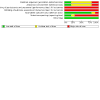
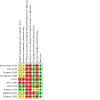
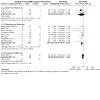
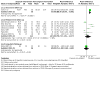
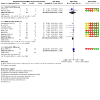



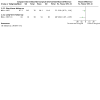
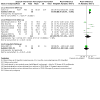


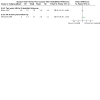
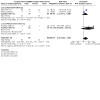
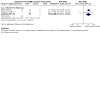
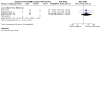


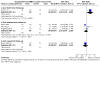
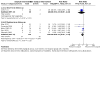
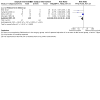

Update of
-
Surgical versus non-surgical interventions for treating patellar dislocation.Cochrane Database Syst Rev. 2015 Feb 26;(2):CD008106. doi: 10.1002/14651858.CD008106.pub3. Cochrane Database Syst Rev. 2015. Update in: Cochrane Database Syst Rev. 2023 Jan 24;1:CD008106. doi: 10.1002/14651858.CD008106.pub4. PMID: 25716704 Updated.
References
References to studies included in this review
Askenberger 2018 {published data only}
-
- Askenberger M, Bengtsson Mostrom E, Ekstrom W, Arendt EA, Hellsten A, Mikkelsen C, et al. Operative repair of medial patellofemoral ligament injury versus knee brace in children with an acute first-time traumatic patellar dislocation: a randomized controlled trial. American Journal of Sports Medicine 2018;46(10):2328-40. [DOI: 10.1177/0363546518770616] [PMID: ] - DOI - PubMed
-
- ISRCTN39959729. Conservative versus arthroscopic refixation of the Medial Patellofemoral ligament (MPFL) after traumatic first time dislocation of the patella in children [Conservative versus Arthroscopic refixation of the Medial Patellofemoral ligament (MPFL) after traumatic first time dislocation of the patella in children: a prospective randomised study]. isrctn.com/ISRCTN39959729 (first received 25 February 2011). [ISRCTN NUMBER: ISRCTN39959729]
Bitar 2012 {published data only}
-
- Bitar A. Personal communication 25 October 2013.
-
- Bitar AC, Demange MK, D'Elia CO, Camanho GL. Traumatic patellar dislocation: nonoperative treatment compared with MPFL reconstruction using patellar tendon. American Journal of Sports Medicine 2012;40(1):114-22. - PubMed
Camanho 2009 {published data only}
-
- Bitar A. Personal communication 19 January 2010.
-
- Camanho GL, Viegas Ade C, Bitar AC, Demange MK, Hernandez AJ. Conservative versus surgical treatment for repair of the medial patellofemoral ligament in acute dislocations of the patella. Arthroscopy 2009;25(6):620-5. - PubMed
Christiansen 2008 {published data only}
-
- Christiansen SE, Jakobsen B, Lund B, Lind M. Isolated repair of the medial patellofemoral ligament in primary dislocation of the patella: a prospective randomized study. Arthroscopy 2008;24(8):881-7. [MEDLINE: ] - PubMed
-
- Lind M. Personal communication 22 January 2010.
Ji 2017 {published data only}
-
- Wang F. Personal communication 5 May 2021.
Nikku 1997 {published data only}
-
- Donell S. Personal communication 25 October 2014.
-
- Nietosvaara Y, Paukku R, Palmu S, Donell ST. Acute patellar dislocation in children and adolescents. Surgical technique. Journal of Bone & Joint Surgery - American Volume 2009;91(Suppl 2 Pt 1):139-45. - PubMed
-
- Nikku R, Nietosvaara Y, Aalto K, Kallio PE. Operative treatment of primary patellar dislocation does not improve medium-term outcome. A 7-year follow-up report and risk analysis of 127 randomised patients. Acta Orthopaedica 2005;76(5):699-704. [MEDLINE: ] - PubMed
-
- Nikku R, Nietosvaara Y, Kallio PE, Aalto K, Michelsson JE. Operative versus closed treatment of primary dislocation of the patella. Similar 2-year results in 125 randomized patients. Acta Orthopaedica Scandinavica 1997;68(5):419-23. [MEDLINE: ] - PubMed
-
- Palmu S, Kallio PE, Donell ST, Helenius I, Nietosvaara Y. Acute patellar dislocation in children and adolescents: a randomised clinical trial. Journal of Bone & Joint Surgery - American Volume 2008;90(3):463-70. [MEDLINE: ] - PubMed
Petri 2013 {published data only}
-
- Balcarek P. Personal communication 27 October 2013.
-
- Petri M, Liodakis E, Hofmeister M, Despang FJ, Maier M, Balcarek P, et al. Operative vs conservative treatment of traumatic patellar dislocation: results of a prospective randomized controlled clinical trial. Archives of Orthopaedics and Trauma Surgery 2013;133:209-13. - PubMed
-
- Petri M. Personal communication 25 October 2013.
Rahman 2020 {published data only}
-
- ISRCTN14950321. Patellar Instability: physiotherapy or Surgery? (PIPS feasibility trial). who.int/trialsearch/Trial2.aspx?TrialID=ISRCTN14950321 (first received 22 December 2016). [ISRCTN NUMBER: 14950321]
-
- Rahman U, Gemperle-Mannion E, Qureshi A, Edwin C, Smith TO, Parsons H, et al. The feasibility of a randomised control trial to assess physiotherapy against surgery for recurrent patellar instability. Pilot and Feasibility Studies 2020;6:94. [DOI: 10.1186/s40814-020-00635-9] [PMID: ] - DOI - PMC - PubMed
Regalado 2016 {published data only}
-
- Regalado G, Lintula H, Kokki H, Kroger H, Vaatainen U, Eskelinen M. Six-year outcome after non-surgical versus surgical treatment of acute primary patellar dislocation in adolescents: a prospective randomized trial. Knee Surgery Sports Traumatology Arthroscopy 2016;24(1):6-11. [DOI: 10.1007/s00167-014-3271-3] [PMID: ] - DOI - PubMed
Sillanpää 2009 {published data only}
-
- Sillanpää P. Personal communication 18 January 2010.
-
- Sillanpää PJ, Mattila VM, Mäenpää H, Kiuru M, Visuri T, Pihlajamäki H. Treatment with and without initial stabilizing surgery for primary traumatic patellar dislocation. A prospective randomized study. Journal of Bone & Joint Surgery - American Volume 2009;91(2):263-70. [MEDLINE: ] - PubMed
References to studies excluded from this review
Alvarez 2020 {published data only}
Kang 2017 {unpublished data only}
-
- ChiCTR-IOR-17010528. Fixation versus unfixation of osteochondral fractures after patellar dislocations in adolescent patients: a randomized controlled trial. chictr.org.cn/showproj.aspx?proj=17416 (first received 26 January 2017).
Moström 2014 {published data only}
NCT02185001 {published data only}
-
- NCT02185001. Repair of medial patellofemoral ligament compared to conservative treatment for first time patella dislocation. clinicaltrials.gov/show/NCT02185001 (first received 9 July 2014).
Sillanpää 2011 {unpublished data only}
-
- NCT00816647. A prospective randomized study of medial patellofemoral ligament (MPFL) reconstruction. clinicaltrials.gov/show/NCT00816647 (first received 1 January 2009).
Zheng 2019 {published data only}
-
- Zheng X, Hu Y, Xie P, Cui M, Ma X, Feng Yu-e, et al. Surgical medial patellofemoral ligament reconstruction versus non-surgical treatment of acute primary patellar dislocation: a prospective controlled trial. International Orthopaedics 2019;43(6):1495-1501. [DOI: 10.1007/s00264-018-4243-x] [PMID: ] - DOI - PubMed
References to ongoing studies
Liebensteiner 2021 {published data only}
-
- Liebensteiner M, Keiler A, El Attal R, Balcarek P, Dirisamer F, Giesinger J, et al. Conservative versus tailored surgical treatment in patients with first time lateral patella dislocation: a randomized-controlled trial. Journal of Orthopaedic Surgery and Research 2021;16:378. [DOI: 10.1186/s13018-021-02513-3] [PMID: ] - DOI - PMC - PubMed
NCT02263807 {published data only}
-
- NCT02263807. Knee function in patients with two or more episodes of patella dislocations. clinicaltrials.gov/show/NCT02263807 (first received 13 October 2014).
Additional references
Arendt 2016
Atkin 2000
-
- Atkin DM, Fithian DC, Marangi KS, Stone ML, Dobson BE, Mendelsohn C. Characteristics of patients with primary acute lateral patellar dislocation and their recovery within the first 6 months of injury. American Journal of Sports Medicine 2000;28(4):472-9. [MEDLINE: ] - PubMed
Baier 2011
Beasley 2004
-
- Beasley LS, Vidal AF. Traumatic patellar dislocation in children and adolescents: treatment update and literature review. Current Opinion in Pediatrics 2004;16(1):29-36. [MEDLINE: ] - PubMed
Bennell 2000
-
- Bennell K, Bartam S, Crossley K, Green S. Outcome measures in patellofemoral pain syndrome: test retest reliability and inter-relationships. Physical Therapy in Sport 2000;1(2):32-41.
Boden 1997
-
- Boden BP, Pearsall AW, Garrett WE Jr, Feagin JA Jr. Patellofemoral instability: evaluation and management. Journal of the American Academy of Orthopaedic Surgeons 1997;5(1):47-57. [PMID: ] - PubMed
Carter 1964
-
- Carter C, Wilkinson J. Persistent joint laxity and congenital dislocation of the hip. Journal of Bone and Joint Journal - American Edition 1964;46:40-5. - PubMed
Conlan 1993
-
- Conlan T, Garth WP Jr, Lemons JE. Evaluation of the medial soft-tissue restraints of the extensor mechanism of the knee. Journal of Bone and Joint Surgery - American Volume. 1993;75(5):682-93. [MEDLINE: ] - PubMed
CONSORT 2010
-
- Schulz KF, Altman DG, Moher D, CONSORT Group. CONSORT 2010 Statement: updated guidelines for reporting parallel group randomised trials. Journal of Clinical Epidemiology 2010;63(8):834-40. [MEDLINE: ] - PubMed
Cosgarea 2002
-
- Cosgarea AJ, Browne JA, Kim TK, McFarland EG. Evaluation and management of the unstable patella. Physician and Sportsmedicine 2002;30(10):33-40. [EMBASE: 2002360234] - PubMed
Crossley 2004
-
- Crossley KM, Bennell KL, Cowan SM, Green S. Analysis of outcome measures for persons with patellofemoral pain: which are reliable and valid? Archives of Physical Medicine and Rehabilitation 2004;85(5):815-22. - PubMed
Dath 2006
-
- Dath R, Chakravarthy J, Porter KM. Patella dislocations. Trauma 2006;8(1):5-11. [EMBASE: 2006239083]
Dejour 1994
-
- Dejour H, Walch G, Nove-Josserand L, Guier C. Factors of patellar instability: an anatomic radiographic study. Knee Surgery, Sports Traumatology, Arthroscopy 1994;2(1):19-26. [MEDLINE: ] - PubMed
Donell 2006a
-
- Donell ST. Patellofemoral dysfunction-extensor mechanisms malalignment. Current Orthopaedics 2006;20(2):103-11.
Donell 2006b
-
- Donell ST, Joseph G, Hing CB, Marshall TJ. Modified Dejour trochleoplasty for severe dysplasia: operative technique and early clinical results. Knee 2006;13(4):266-73. [MEDLINE: ] - PubMed
Donell 2014
-
- Donell S. Personal communication 25 October 2014.
Felli 2019
Flandry 1991
-
- Flandry F, Hunt JP, Terry GC, Hughston JC. Analysis of subjective knee complaints using visual analog scales. American Journal of Sports Medicine 1991;19(2):112-8. [MEDLINE: ] - PubMed
Frosch 2011
-
- Frosch S, Balcarek P, Walde TA, Schüttrumpf JP, Wachowski MM, Ferleman KG, et al. The treatment of patellar dislocation: a systematic review [Die Therapie der Patellaluxation: eine systematische Literaturanalyse]. Zeitschrift fur Orthopadie und Unfallchirurgie 2011;149(6):630-45. [DOI: 10.1055/s-0030-1250691] - DOI - PubMed
Fulkerson 1987
GRADEpro GDT [Computer program]
-
- GRADEpro GDT. Version accessed on 19 April 2022. Hamilton (ON): McMaster University (developed by Evidence Prime). Available at gradepro.org.
Guhan 2009
-
- Guhan B, Lee AS. Acute repair of medial patellofemoral ligament. Journal of Bone and Joint Surgery - British Volume 2009;91(Suppl 3):413-4.
Hautamaa 1998
-
- Hautamaa PV, Fithian DC, Kaufman KR, Daniel DM, Pohlmeyer AM. Medial soft tissue restraints in lateral patellar instability and repair. Clinical Orthopaedics and Related Research 1998;349:174-82. [MEDLINE: ] - PubMed
Herdman 2011
Hiemstra 2013
Higgins 2011
-
- Higgins JP, Altman DG, Sterne JA, editor(s). Chapter 8: Assessing risk of bias in included studies. In: Higgins JP, Green S, editor(s). Cochrane Handbook for Systematic Reviews of Interventions Version 5.1.0 (updated March 2011). The Cochrane Collaboration, 2011. Available from training.cochrane.org/handbook/archive/v5.1/.
Hsiao 2010
-
- Hsiao M, Owens BD, Burks R, Sturdivant RX, Cameron KL. Incidence of acute traumatic patellar dislocation among active-duty United States military service members. American Journal of Sports Medicine 2010;38(10):1997-2004. - PubMed
Huntington 2020
-
- Huntington LS, Webster KE, Devitt BM, Scanlon JP, Feller JA. Factors associated with an increased risk of recurrence after a first-time patellar dislocation: a systematic review and meta-analysis. American Journal of Sports Medicine 2020;48:2552-62. [DOI: 10.1177/0363546519888467] [PMID: ] - DOI - PubMed
Hussein 2018
-
- Hussein A, Sallam AA, Imam MA, Snow M. Surgical treatment of medial patellofemoral ligament injuries achieves better outcomes than conservative management in patients with primary patellar dislocation: a meta-analysis. Journal of ISAKOS 2018;3:98-104. [DOI: 10.1136/jisakos-2017-000152] - DOI
Krämer 2014
-
- Krämer JA, Schmidt S, Jürgens KU, Lentschig M, Schmeling A, Vieth V. The use of magnetic resonance imaging to examine ossification of the proximal tibial epiphysis for forensic age estimation in living individuals. Forensic Science, Medicine and Pathology 2014;10:306-13. [DOI: 10.1007/s12024-014-9559-2] [PMID: ] - DOI - PubMed
Kujala 1993
-
- Kujala UM, Jaakkola LH, Koskinen SK, Taimela S, Hurme M, Nelimarkka O. Scoring of patellofemoral disorders. Arthroscopy 1993;9(2):159-63. [MEDLINE: ] - PubMed
Lefebvre 2019
-
- Lefebvre C, Glanville J, Briscoe S, Littlewood A, Marshall C, Metzendorf M-I, et al. Chapter 4: Searching for and selecting studies. In: Higgins JP, Thomas J, Chandler J, Cumpston M, Li T, Page MJ, Welch VA, editor(s). Cochrane Handbook for Systematic Reviews of Interventions version 6.0 (updated July 2019). Cochrane, 2019. Available from training.cochrane.org/handbook.
Liu 2018
Lysholm 1982
-
- Lysholm J, Gillquist J. Evaluation of knee ligament surgery results with special emphasis on use of a scoring scale. American Journal of Sports Medicine 1982;10(3):150-4. [MEDLINE: ] - PubMed
Mäenpää 1997
Martinez‐Cano 2021
-
- Martinez-Cano JP, Chica J, Martinez-Arboleda JJ, Rincón-Escobar E, Zamudio-Castilla L, Renjifo M, et al. Patellofemoral dislocation recurrence after a first episode: a case-control study. Orthopaedic Journal of Sports Medicine 2021;9(1):1-7. [DOI: 10.1177/2325967120981636] [PMID: ] - DOI - PMC - PubMed
McGee 2017
Mears 2001
-
- Mears SC, Cosgarea AJ. Surgical treatment options in patellofemoral disorders. Current Opinion in Orthopaedics 2001;12(2):167-73. [EMBASE: 2001135456]
Merchant 2007
-
- Merchant ND, Bennett CH. Recent concepts in patellofemoral instability. Current Opinion in Orthopaedics 2007;18(2):153-60. [EMBASE: 2007090939]
Mitchell 2015
Moiz 2018
Nietosvaara 1994
-
- Nietosvaara Y, Aalto K, Kallio PE. Acute patellar dislocation in children: incidence and associated osteochondral fractures. Journal of Pediatric Orthopaedics 1994;14(4):513-5. [MEDLINE: ] - PubMed
Palmu 2008
Paxton 2003
-
- Paxton EW, Fithian DC, Stone ML, Silva P. The reliability and validity of knee-specific and general health instruments in assessing acute patellar dislocation outcomes. American Journal of Sports Medicine 2003;31(4):487-92. [MEDLINE: ] - PubMed
Salonen 2017
Sanders 2018
Scher 2010
Schünemann 2021
-
- Schünemann HJ, Higgins JP, Vist GE, Glasziou P, Akl EA, Skoetz N, et al. Chapter 14: Completing ‘Summary of findings’ tables and grading the certainty of the evidence. In: Higgins JP, Thomas J, Chandler J, Cumpston M, Li T, Page MJ, Welch VA, editor(s). Cochrane Handbook for Systematic Reviews of Interventions version 6.2 (updated February 2021). Cochrane, 2021. Available from training.cochrane.org/handbook.
Sillanpää 2012
Smith 2010
Smith 2011a
Smith 2011b
-
- Smith TO, Song F, Donell ST, Hing CB. Operative versus non-operative management of patellar dislocation. A meta-analysis. Knee Surgery, Sports Traumatology, Arthroscopy 2011;19(6):988-98. [PMID: ] - PubMed
Smith 2014
Song 2010
Stefancin 2007
Strugnell 2014
-
- Strugnell C, Dunstan DW, Magliano DJ, Zimmet PZ, Shaw JE, Daly RM. Influence of age and gender on fat mass, fat-free mass and skeletal muscle mass among Australian adults: The Australian Diabetes, Obesity and Lifestyle Study (AusDiab). Journal of Nutrition, Health and Ageing 2014;18(5):540-6. - PubMed
Tegner 1985
-
- Tegner Y, Lysholm J. Rating systems in the evaluation of knee ligament injuries. Clinical Orthopaedics and Related Research 1985;198:43-9. [MEDLINE: ] - PubMed
Thompson 2019
Tian 2020
-
- Tian G, Yang G, Zuo L, Li F, Wang F. Conservative versus repair of medial patellofemoral ligament for the treatment of patients with acute primary patellar dislocations: a systematic review and meta-analysis. Journal of Orthopaedic Surgery 2020;28(2):1-8. [DOI: 10.1177/2309499020932375] [PMID: ] - DOI - PubMed
Tsai 2012
Ware 1996
-
- Ware J Jr, Kosinski M, Keller SD. A 12-Item Short-Form Health Survey: construction of scales and preliminary tests of reliability and validity. Medical Care 1996;34(3):220-33. [MEDLINE: ] - PubMed
Wille 2010
Woo 1998
-
- Woo R, Busch MT. Management of patellar instability in children. Operative Techniques in Sports Medicine 1998;6(4):247-58.
Xing 2020
-
- Xing X, Shi H, Feng S. Does surgical treatment produce better outcomes than conservative treatment for acute primary patellar dislocations? A meta-analysis of 10 randomized controlled trials. Journal of Orthopaedic Surgery and Research 2020;15:118. [DOI: 10.1186/s13018-020-01634-5] [PMID: ] - DOI - PMC - PubMed
Yang 2019
Zhang 2020
-
- Zhang K, Jiang H, Li J, Fu W. Comparison between surgical and nonsurgical treatment for primary patellar dislocations in adolescents: a systematic review and meta-analysis of comparative studies. Orthopaedic Journal of Sports Medicine 2020;8(9):1-10. [DOI: 10.1177/2325967120946446] [PMID: ] - DOI - PMC - PubMed
References to other published versions of this review
Hing 2011
Publication types
MeSH terms
LinkOut - more resources
Full Text Sources
Medical
Miscellaneous

